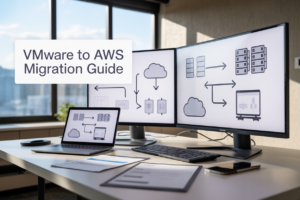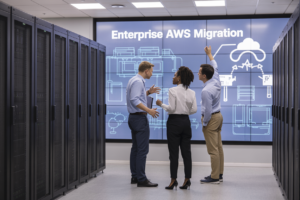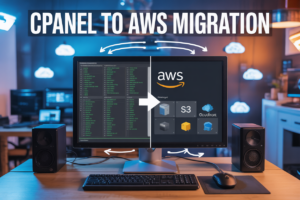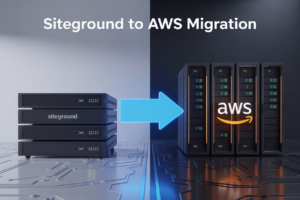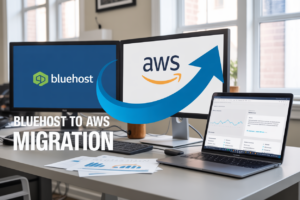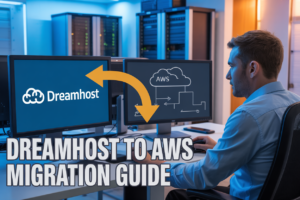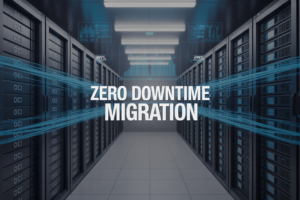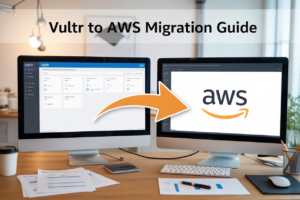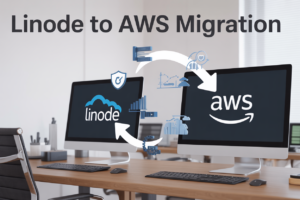Testing AWS Kinesis locally can be a real pain when you’re working with Spring Boot applications. You don’t want to rack up cloud costs or deal with complex AWS permissions just to run your tests. That’s where LocalStack AWS testing comes in – it lets you simulate AWS services right on your machine.
This guide is for Spring Boot developers who need to build and test Kinesis data streams without hitting actual AWS infrastructure. You’ll learn how to set up a complete local development environment that mirrors production behavior.
We’ll walk through setting up LocalStack for AWS service simulation, so you can spin up Kinesis streams locally in seconds. Then we’ll dive into Spring Boot Kinesis integration, covering both producer and consumer components with real code examples. Finally, we’ll cover testing strategies that’ll help you catch issues early and troubleshoot problems before they hit production.
By the end, you’ll have a solid LocalStack setup tutorial under your belt and know exactly how to build reliable Kinesis applications locally.
Understanding LocalStack for AWS Service Simulation
What LocalStack offers for local development
LocalStack AWS testing provides a complete cloud service emulator that runs on your local machine, giving developers the ability to test AWS services without connecting to the actual AWS cloud. This powerful tool creates a fully functional mock environment that mimics AWS services like Kinesis, S3, DynamoDB, Lambda, and dozens of others. You can spin up entire AWS architectures on your laptop, complete with networking, security policies, and service interactions that behave exactly like their cloud counterparts.
Key benefits of testing AWS services locally
Testing AWS services locally transforms your development workflow by eliminating the constant back-and-forth with remote services. Your Spring Boot applications can interact with Kinesis data streams instantly, without network latency or internet connectivity requirements. This approach means faster feedback loops during development, easier debugging with full local control, and the ability to run comprehensive integration tests in your CI/CD pipeline without external dependencies. You can also experiment with different configurations and edge cases without worrying about accidentally affecting production resources or incurring unexpected costs.
LocalStack compatibility with AWS Kinesis
LocalStack delivers excellent compatibility with AWS Kinesis, supporting all major Kinesis operations including stream creation, shard management, record publishing, and consumer group coordination. The Kinesis implementation handles both the Kinesis Data Streams and Kinesis Data Firehose services, allowing your Spring Boot Kinesis integration to work seamlessly with the same SDK calls and configuration patterns you’d use in production. LocalStack maintains API compatibility with AWS Kinesis versions, ensuring your Spring Boot applications using AWS SDK for Java can switch between local and cloud environments without code changes.
Cost savings and development speed advantages
Running AWS service simulation locally eliminates the costs associated with development and testing environments in the cloud. Instead of paying for Kinesis shards, data transfer, and storage during development cycles, everything runs on your local infrastructure. Development teams can provision multiple streams, test high-throughput scenarios, and run extensive test suites without budget constraints. The speed advantages are equally compelling – no API throttling, instant resource provisioning, and the ability to reset entire environments in seconds rather than minutes, making your Spring Boot LocalStack configuration incredibly efficient for rapid prototyping and testing.
Setting Up Your Development Environment
Installing LocalStack with Docker
Docker makes LocalStack AWS testing incredibly straightforward. Start by pulling the LocalStack community edition with docker pull localstack/localstack. Create a docker-compose.yml file specifying the AWS services you need – for Kinesis integration, include SERVICES=kinesis in your environment variables. The default ports are 4566 for the edge service and 4571 for the web interface. Launch your container with docker-compose up -d and verify the installation by checking http://localhost:4566/health. This setup provides a complete AWS service simulation development environment locally.
Configuring Spring Boot Project Dependencies
Your Spring Boot project needs specific dependencies for seamless LocalStack integration. Add spring-boot-starter-web for basic functionality and spring-cloud-aws-starter for AWS service connectivity. Include spring-boot-starter-test and testcontainers for comprehensive testing capabilities. The Maven or Gradle configuration should specify compatible versions – Spring Boot 2.7+ works well with Spring Cloud AWS 2.4+. Don’t forget jackson-databind for JSON processing when handling Kinesis records. These dependencies create the foundation for robust Spring Boot Kinesis integration with LocalStack.
Essential AWS SDK Libraries for Kinesis Integration
The AWS SDK v2 provides the most reliable Kinesis data streams local testing experience. Add software.amazon.awssdk:kinesis for core Kinesis operations and software.amazon.awssdk:netty-nio-client for async processing. Include software.amazon.awssdk:apache-client for HTTP connectivity and software.amazon.awssdk:auth for authentication handling. Configure the SDK to point to LocalStack endpoints using custom endpoint URLs like http://localhost:4566. These libraries enable complete Kinesis producer consumer Spring Boot functionality while maintaining compatibility with production AWS environments through configuration management.
Configuring Spring Boot for Kinesis Integration
Creating application properties for LocalStack endpoints
Spring Boot Kinesis integration with LocalStack requires specific endpoint configurations in your application.yml or application.properties. Set spring.cloud.aws.kinesis.endpoint to http://localhost:4566 and disable SSL with spring.cloud.aws.kinesis.enabled=false. Configure the region as us-east-1 since LocalStack defaults to this region. Override the default AWS endpoint URLs to point to your LocalStack instance running on port 4566.
Setting up AWS credentials for local development
LocalStack AWS testing doesn’t require real AWS credentials, but the Spring Boot AWS SDK still expects them. Create dummy credentials by setting AWS_ACCESS_KEY_ID=test and AWS_SECRET_ACCESS_KEY=test as environment variables. Alternatively, configure these in your application.properties using cloud.aws.credentials.access-key=test and cloud.aws.credentials.secret-key=test. This prevents authentication errors while keeping your local development environment isolated from production AWS resources.
Configuring Kinesis client beans
Build custom Kinesis client beans to work with LocalStack endpoints. Create a @Configuration class that defines KinesisClient and KinesisAsyncClient beans with LocalStack-specific settings. Use AwsClientBuilder.EndpointConfiguration to point to http://localhost:4566. Set the signing region to match your LocalStack region configuration. Override the default credential provider to use static credentials for local testing scenarios.
Environment-specific configuration management
Implement profile-based configuration to switch between LocalStack and production AWS environments seamlessly. Create separate application-local.yml and application-prod.yml files. Use Spring profiles (@Profile("local")) to conditionally load LocalStack-specific beans. Configure environment variables through Docker Compose or IDE run configurations. This approach ensures your Spring Boot LocalStack configuration doesn’t interfere with production deployments while maintaining clean separation between local AWS service simulation and live environments.
Implementing Kinesis Producer Functionality
Creating Kinesis stream programmatically
Setting up Kinesis streams through code gives you complete control over your LocalStack AWS testing environment. Using the AWS SDK for Java, you can dynamically create streams with specific shard counts and configurations. The KinesisClient allows you to check if streams exist and create them programmatically during application startup. This approach works seamlessly with LocalStack, enabling consistent Spring Boot Kinesis integration across different development environments.
@Component
public class KinesisStreamManager {
@Autowired
private KinesisClient kinesisClient;
public void createStreamIfNotExists(String streamName, int shardCount) {
try {
DescribeStreamRequest request = DescribeStreamRequest.builder()
.streamName(streamName)
.build();
kinesisClient.describeStream(request);
} catch (ResourceNotFoundException e) {
CreateStreamRequest createRequest = CreateStreamRequest.builder()
.streamName(streamName)
.shardCount(shardCount)
.build();
kinesisClient.createStream(createRequest);
}
}
}
Building message publishing service
Your message publishing service acts as the bridge between your Spring Boot application and Kinesis data streams. Create a dedicated service class that encapsulates all publishing logic, making it easy to inject dependencies and manage configurations. The service should handle partition key generation, record formatting, and batch operations for optimal performance. When working with LocalStack, ensure your service can switch between local and AWS endpoints seamlessly.
@Service
public class KinesisProducerService {
@Autowired
private KinesisClient kinesisClient;
@Value("${aws.kinesis.stream.name}")
private String streamName;
public CompletableFuture<PutRecordResponse> publishMessage(String data, String partitionKey) {
PutRecordRequest request = PutRecordRequest.builder()
.streamName(streamName)
.data(SdkBytes.fromUtf8String(data))
.partitionKey(partitionKey)
.build();
return CompletableFuture.supplyAsync(() -> kinesisClient.putRecord(request));
}
public CompletableFuture<PutRecordsResponse> publishBatch(List<PutRecordsRequestEntry> records) {
PutRecordsRequest batchRequest = PutRecordsRequest.builder()
.streamName(streamName)
.records(records)
.build();
return CompletableFuture.supplyAsync(() -> kinesisClient.putRecords(batchRequest));
}
}
Handling serialization and data formatting
Proper serialization ensures your data flows smoothly through Kinesis streams during LocalStack testing. JSON serialization works well for most Spring Boot applications, but consider your specific data requirements. Create custom serializers for complex objects and always validate data size limits. Kinesis records have a 1MB limit, so implement compression for larger payloads. Use consistent encoding formats like UTF-8 to avoid character corruption issues.
@Component
public class KinesisDataSerializer {
private final ObjectMapper objectMapper;
public KinesisDataSerializer() {
this.objectMapper = new ObjectMapper();
this.objectMapper.registerModule(new JavaTimeModule());
this.objectMapper.disable(SerializationFeature.WRITE_DATES_AS_TIMESTAMPS);
}
public String serialize(Object data) throws JsonProcessingException {
return objectMapper.writeValueAsString(data);
}
public SdkBytes serializeToBytes(Object data) throws JsonProcessingException {
String json = serialize(data);
return SdkBytes.fromUtf8String(json);
}
public <T> T deserialize(String json, Class<T> clazz) throws JsonProcessingException {
return objectMapper.readValue(json, clazz);
}
}
Error handling and retry mechanisms
Robust error handling prevents data loss and maintains system reliability in your Spring Boot Kinesis integration. Implement exponential backoff strategies for transient failures and dead letter queues for permanent errors. LocalStack simulation helps you test various failure scenarios without affecting production systems. Use circuit breakers to prevent cascade failures and log all retry attempts for debugging purposes.
@Component
public class KinesisRetryHandler {
private static final int MAX_RETRY_ATTEMPTS = 3;
private static final long INITIAL_DELAY_MS = 1000;
@Retryable(
value = {ProvisionedThroughputExceededException.class, InternalFailureException.class},
maxAttempts = MAX_RETRY_ATTEMPTS,
backoff = @Backoff(delay = INITIAL_DELAY_MS, multiplier = 2)
)
public PutRecordResponse publishWithRetry(PutRecordRequest request, KinesisClient client) {
try {
return client.putRecord(request);
} catch (Exception e) {
log.error("Failed to publish record after {} attempts", MAX_RETRY_ATTEMPTS, e);
throw e;
}
}
@Recover
public PutRecordResponse recover(Exception ex, PutRecordRequest request) {
log.error("All retry attempts exhausted for record: {}", request.partitionKey());
// Send to dead letter queue or alternative storage
return null;
}
}
Building Kinesis Consumer Components
Implementing Kinesis Client Library integration
Spring Boot applications can leverage the Kinesis Client Library (KCL) for robust stream processing through dedicated consumer configurations. The KCL handles shard management, load balancing, and fault tolerance automatically when integrated with LocalStack AWS testing environments. Configure your Spring Boot Kinesis integration by creating a KinesisClientLibConfiguration bean that connects to your LocalStack endpoint. This setup enables seamless AWS local development while maintaining production-grade consumer patterns. The library manages worker coordination and shard assignments across multiple consumer instances, making it perfect for Kinesis data streams local testing scenarios.
Processing incoming stream records
Stream record processing requires implementing the RecordProcessor interface to handle incoming data from Kinesis streams. Your Spring Boot application should deserialize records, apply business logic, and manage processing state within each batch. Exception handling becomes critical here – wrap your processing logic in try-catch blocks to prevent single record failures from disrupting entire batches. Use Spring’s @KinesisListener annotation for simplified record consumption, or implement custom processors for complex transformation workflows. LocalStack provides consistent record delivery patterns that mirror AWS production behavior, ensuring your Kinesis integration best practices translate directly to live environments.
Checkpoint management for consumer applications
Consumer checkpointing tracks processing progress and enables recovery from failures by storing the last successfully processed sequence number. Spring Boot applications should implement checkpoint strategies using DynamoDB tables in LocalStack for state persistence. Configure automatic checkpointing intervals based on your throughput requirements – frequent checkpoints reduce reprocessing but increase I/O overhead. Manual checkpointing offers fine-grained control for critical applications where data loss prevention is paramount. The KCL handles checkpoint coordination between consumer instances, ensuring consistent progress tracking across scaled deployments in your AWS service simulation development environment.
Scaling consumer instances effectively
Effective scaling requires understanding shard-to-consumer ratios and implementing horizontal scaling strategies. Each Kinesis shard supports one active consumer at a time, so scaling beyond your shard count won’t improve throughput. Monitor consumer lag metrics through CloudWatch integration in LocalStack to identify scaling triggers. Spring Boot’s actuator endpoints can expose custom metrics for consumer performance monitoring. Implement graceful shutdown procedures that complete in-flight record processing before terminating instances. Container orchestration platforms like Docker Compose work excellently with LocalStack for testing scaled consumer deployments locally before production deployment.
Testing Strategies and Best Practices
Writing unit tests for Kinesis components
Mock your Kinesis clients using Spring’s @MockBean annotation to isolate component logic from AWS dependencies. Test producer components by verifying putRecord calls with correct partition keys and data payloads. For consumer testing, simulate incoming records using mock KinesisClientRecord objects and validate message processing logic. Use ArgumentCaptor to capture and assert on the exact parameters passed to Kinesis methods, ensuring your Spring Boot Kinesis integration handles serialization and error scenarios properly.
Integration testing with LocalStack containers
Launch LocalStack containers using Testcontainers framework to create realistic AWS service simulation environments for your Spring Boot applications. Configure test profiles with LocalStack endpoints and disable SSL verification for seamless local testing. Use @SpringBootTest with @Testcontainers to automatically manage container lifecycle during integration tests. Set up dedicated Kinesis streams per test class to avoid data contamination, and verify end-to-end message flow from producer to consumer components within your LocalStack AWS testing environment.
Simulating real-world scenarios locally
Create test data that mirrors production patterns including varying message sizes, burst traffic, and error conditions. Implement retry logic testing by temporarily stopping LocalStack containers mid-stream to validate your application’s resilience. Use multiple consumer instances to test load distribution and scaling behavior. Generate realistic timestamps, user IDs, and business data to uncover edge cases that might not surface with simple test payloads. This approach ensures your Spring Boot Kinesis integration handles production complexities effectively.
Performance testing with mock data streams
Generate high-volume test data using multithreaded producers to stress-test your Kinesis consumer performance locally. Monitor memory usage and processing latency while varying batch sizes and polling intervals. Use JMeter or custom load generators to simulate sustained throughput scenarios against your LocalStack setup. Measure consumer lag and record processing rates to identify bottlenecks before deploying to production. Profile your Spring Boot application under load to optimize Kinesis integration best practices and ensure scalable data stream processing.
Troubleshooting Common Integration Issues
Resolving LocalStack connectivity problems
Connection failures often stem from incorrect endpoint configurations or port conflicts. Check your application.yml for proper LocalStack endpoints (typically http://localhost:4566) and verify Docker containers are running. Network issues between Spring Boot and LocalStack containers can be resolved by ensuring both services share the same Docker network or using host networking mode.
Debugging Kinesis stream configuration errors
Stream creation failures usually indicate missing IAM permissions or incorrect stream names in LocalStack AWS testing environments. Verify your Kinesis stream exists using AWS CLI commands against LocalStack endpoints. Common configuration errors include mismatched partition keys, invalid shard counts, or retention period settings that don’t align with your Spring Boot Kinesis integration requirements.
Handling serialization and deserialization failures
JSON serialization errors frequently occur when POJOs lack proper constructors or Jackson annotations. Enable debug logging for com.amazonaws.services.kinesis to identify payload transformation issues. Spring Boot AWS testing becomes smoother when you implement custom serializers for complex objects and validate data formats before sending to Kinesis data streams local testing environments.
LocalStack gives developers a game-changing way to test AWS Kinesis integrations without burning through cloud costs or dealing with complex remote setups. By running everything locally, you can catch bugs early, iterate faster, and build confidence in your Spring Boot applications before they hit production. The combination of proper configuration, solid producer-consumer implementation, and thorough testing creates a robust foundation for any streaming data application.
Getting your local AWS testing environment right pays dividends down the road. Start small with basic producer-consumer patterns, then gradually add complexity as you become comfortable with the LocalStack workflow. Your future self will thank you for investing time in proper local testing – debugging production Kinesis issues at 2 AM is never fun, but having a reliable local testing setup makes those scenarios much less likely.











